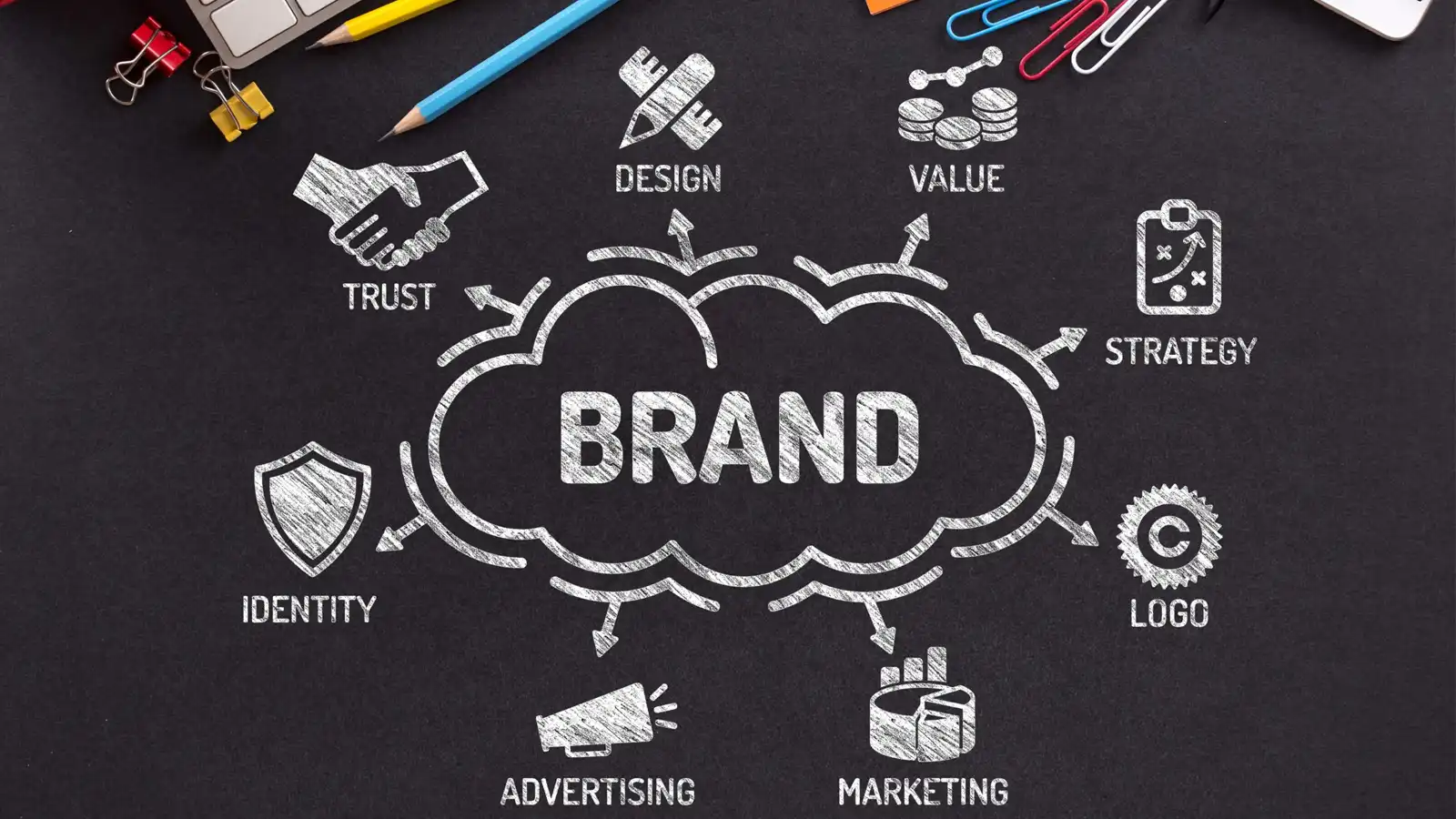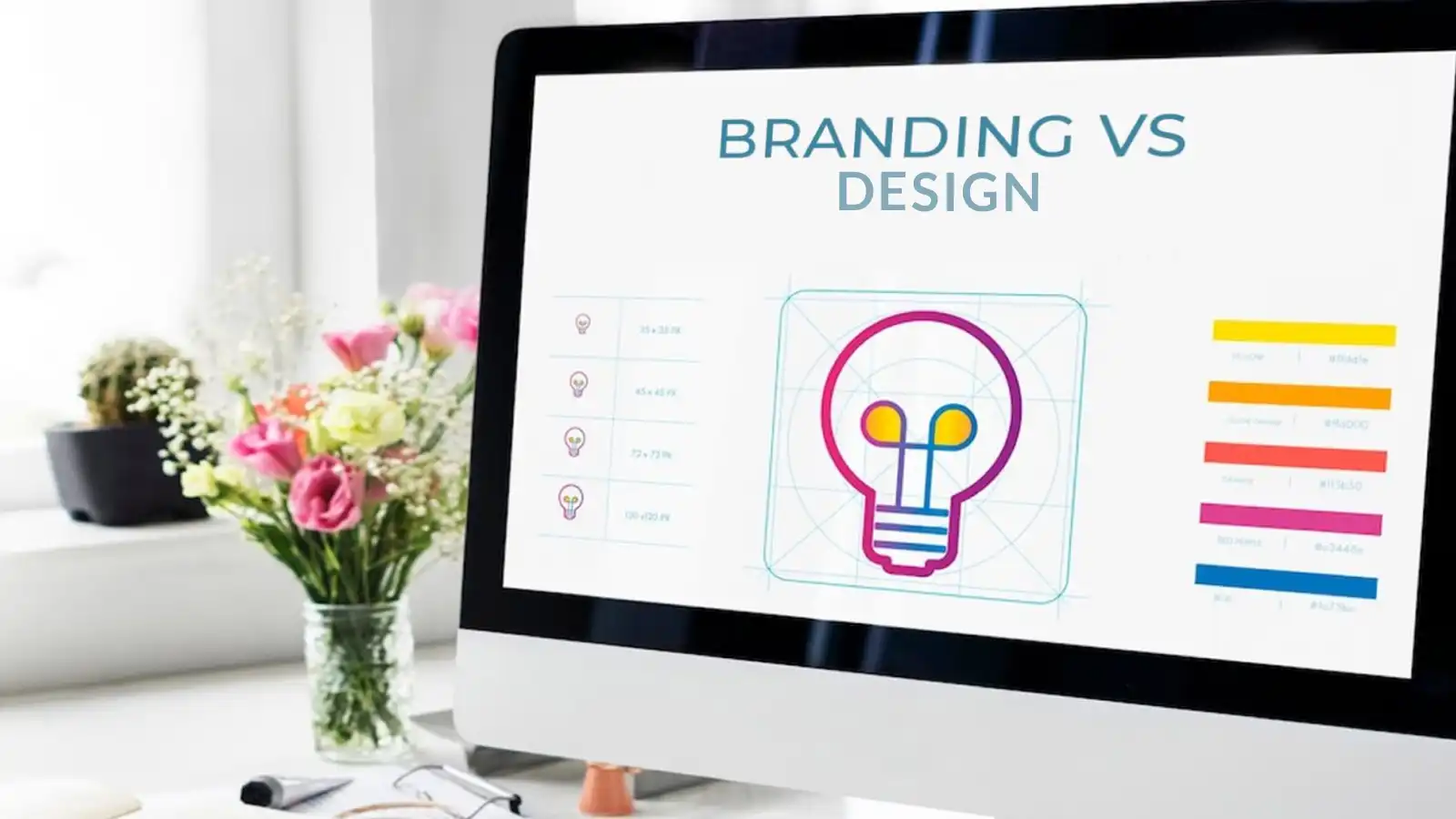
Hey, business professionals! Understanding the connection between strong branding and design is important. Let’s dissect how they team up to impress your audience.
In this article, we will explain what brand and design mean, how they differ, and why both are essential for business success. With clear explanations and visual examples, you’ll learn the unique roles of branding and design. Understanding these key distinctions will empower you to make smarter marketing decisions that align with your business goals.
Whether launching a new company or revamping an existing brand, this piece will provide the clarity you need on these fundamental concepts. Continue reading for a comprehensive look at branding versus design.
Defining Branding
Branding refers to the process of creating a unique and recognizable identity for a product, service, or business. It encompasses the visual elements that represent a brand, such as logos, typography, and colors, as well as the brand’s personality and messaging. Effective branding helps to distinguish a company from competitors and forge an emotional connection with customers.
Brand Personality
A brand’s personality refers to the human traits or voice of the brand. It shapes how a brand speaks to and connects with its audience. Brand personality is conveyed through:
- Messaging: The language and tone used in brand communications. Messaging should align with the brand’s values and positioning.
- Storytelling: The stories a brand shares about itself, its mission, values, and purpose. Stories humanize the brand and build emotional connections.
- Experience: The overall experience a customer has when interacting with the brand. The brand experience should deliver on the brand promise and reflect the brand personality.
Branding is the foundation for a company’s success. When done well, it creates lasting impressions and cultivates lifelong customer relationships. Strong brands stand out, connect on an emotional level, and give people a reason to choose them over competitors.
Defining Design
Design refers to the visual elements of a brand like logos, icons, color palettes, and fonts. As a business owner, understanding the difference between branding and design is key.
Logos and Icons
A logo is a visual symbol that represents your company. An icon is a simplified image used to represent a tool, file, or function. Logos and icons should be simple yet memorable. For example, the Nike swoosh and the Apple apple are iconic logos.
Choosing a Color Palette
A color palette of 2-5 colors can help to visually define your brand. Colors evoke emotions, so choose a palette that aligns with your brand personality. For example, blues and greens signify relaxation or environmental friendliness while reds signify excitement or passion.
Selecting Fonts
The fonts you choose also define your visual style. Elegant serif fonts like Times New Roman convey tradition while clean sans serif fonts like Arial appear more modern. Limit yourself to 2-3 complementary fonts to avoid a cluttered appearance.
Design allows you to shape a cohesive visual identity for your brand through a careful selection of logos, icons, color palettes, and fonts. A memorable and consistent design helps to build brand recognition and loyalty over time through powerful visual storytelling. With a well-crafted design in place, you’ll be ready to share your brand with the world.

Key Differences Between Branding and Design
Branding and design are related but distinct strategic processes.
Branding refers to developing a cohesive visual identity and brand perception. It is a long-term strategy focused on establishing brand recognition and loyalty. Design, on the other hand, refers to the visual execution of the brand identity. It involves creating logo concepts, choosing colour palettes, and determining graphical layouts. Design is a one-time process aimed at visually representing the brand.
While branding defines the brand message and personality, design determines how to convey that message through visuals. Branding establishes brand positioning and value propositions, whereas design translates those into a cohesive visual system. Branding takes months or years to develop, but design can be completed in a shorter timeframe. Branding remains largely consistent, though the design may evolve to stay up-to-date.
Branding and design work together to create a memorable and impactful brand experience. Branding provides the blueprint, while design brings it to life visually. One cannot exist without the other. Combining a strategic branding process with strong design leads to the most effective brand representation. Understanding the difference between branding and design will help ensure a cohesive approach to brand building.
Why Branding and Design Work Hand in Hand
Design and branding go hand in hand to visually communicate a company’s identity, values, and personality to its target audience.
Build Recognition
A cohesive brand design helps audiences recognize a company, its products, and its content. Repeated exposure builds familiarity and trust in the brand. Logos, color palettes, and typography create a signature style that audiences come to associate with the brand.
Facilitate Meaningful Connections
Impactful design makes a meaningful first impression and forges ongoing connections with customers. It sparks interest in the brand and gives audiences a sense of its purpose and promise. A memorable brand experience stays with customers and keeps them coming back.
Stand Out from the Crowd
In a sea of competitors, great design helps a brand stand out. It catches attention and creates a striking and lasting visual impression that sets the brand apart. Unique design gives a competitive edge by making the brand more visible and tempting to its target audience.
Align Internal Teams
A well-defined brand identity provides direction for everyone representing the brand. It helps align teams across the organization by giving them a shared understanding of the brand’s vision and values. When all brand touchpoints project a consistent image, it strengthens the overall brand experience for audiences.
Design and branding should work hand in hand as complementary disciplines. United, they forge meaningful connections between a brand and its audiences that drive recognition, loyalty, and success. Divided, they send mixed messages that confuse customers and weaken the brand’s impact. For the strongest brand presence, design and branding must be smoothly integrated.

Branding and Design FAQs
Is branding a part of graphic design?
Branding contains graphic design but also includes other strategic elements. Graphic designers focus on visuals to communicate a brand’s identity, but branding also involves positioning, messaging, and the overall experience. Branding shapes how people perceive and connect with a company or product. Graphic design contributes to this through logos, typography, color palettes, and other visual elements.
Why do graphic designers need branding?
Graphic designers benefit from understanding their client’s brand strategy. The visuals they create should align with and strengthen the brand’s positioning and messaging. Without this context, their designs may not achieve the intended impact or could even confuse the audience. Branding provides the “big picture” that guides graphic design choices.
Is branding the same as logo design?
No, branding is a much broader concept. A logo is one small part of a brand’s visual identity. Branding encompasses the company’s mission, vision, values, positioning, messaging, and overall experience. It aims to form emotional connections with the audience and shape their perceptions. A logo contributes to this, but a logo alone does not constitute a brand. Branding requires a holistic strategy and consistent execution across all customer touchpoints.
Branding provides the foundation and graphic design brings it to life. Together, they can create a cohesive experience that truly resonates with the audience. Understanding their relationship and interdependence will result in more compelling work for both brand strategists and graphic designers.
As a business owner, the difference between branding and design is an important one for you to understand. You can effectively promote your company’s image and values with a strong brand identity and visual design. Consider both branding and design holistically when making business decisions. Build your brand strategy first, so it aligns with your core mission.
Then, implement a cohesive visual design that brings your brand to life. With careful planning, you can utilize branding and design to connect authentically with customers and stand out in a crowded marketplace. Approaching branding and design in a strategic, integrated way can help strengthen your company’s reputation and success in the long term.

